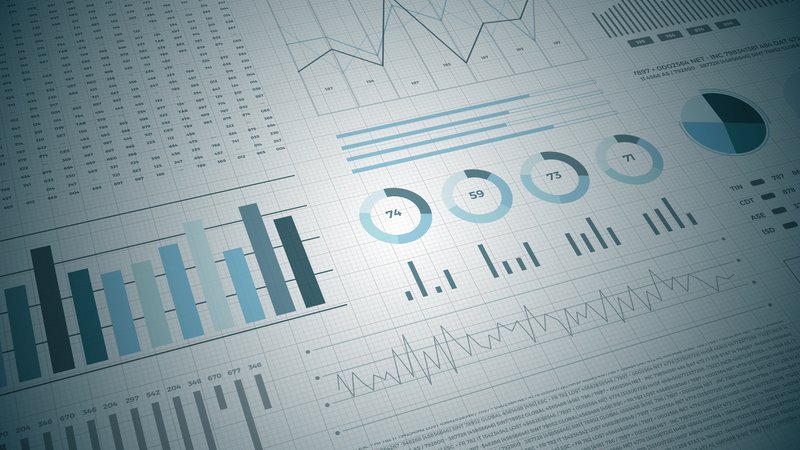Gross Domestic Product by Region, Slovenia, 2019
In 2019, GDP grew by 7.2% in the Jugovzhodna Slovenija region and by 2.2% in Obalno-kraška.
Compared to 2018, in 2019 GDP increased the most in the Jugovzhodna Slovenija region (by 7.2%) and the least in Obalno-kraška (by 2.2%). The regional differences in GDP per capita in Slovenia decreased on average. Employment increased by 3.3% in Zahodna Slovenija and by 1.6% in Vzhodna Slovenija.
GDP grew in all twelve statistical regions
In 2019, GDP in Slovenia was estimated at EUR 48,393 million. This was a 5.5% nominal increase over 2018. GDP grew the most in Jugovzhodna Slovenija (by 7.2%), followed by Podravska and Posavska (in each by 6.4%). The lowest growth was recorded in Primorsko-notranjska (by 2.4%) and Obalno-kraška (by 2.2%). In Osrednjeslovenska, which generated the highest GDP (37.2% or EUR 18,011 million), the growth was 6.0%.
Osrednjeslovenska region generated more than 37% of Slovenian gross value added
Statistical regions generated a different volume of gross value added (GVA) in 2019. The Osrednjeslovenska region generated 37.2% of total GVA generated in Slovenia, followed by Podravska and Savinjska, the shares of which were 12.7% and 11.2%, respectively. The other nine statistical regions lag far behind the Osrednjeslovenska as their shares of GVA range from 1.4% to 8.8%.
The characteristic of the Osrednjeslovenska region is that with the capital of Slovenia it is interesting for most economic activities, especially services. Its share in total GVA generated by services was almost 45%. The shares of GVA generated by agricultural and forest activities were the highest in Jugovzhodna Slovenija (13.4%), Savinjska (12.8%) and Podravska (12.7%) regions. The shares of GVA generated by industry were the highest in Osrednjeslovenska (24.7%) and Savinjska (14.8%) regions.
The regional differences in GDP per capita decreased
The differences between the gross domestic product per capita of individual regions and the Slovenian average are large. In 2019, GDP per capita ranged from 53.0% of the national average in Zasavska to 140.8% in Osrednjeslovenska. The difference between the most and the least successful region was 87.8 p.p. and decreased in comparison to 2018, when it was 88.6 p.p. GDP per capita in Osrednjeslovenska amounted to EUR 32,620, which is 2.7 times more than GDP per capita in Zasavska (EUR 12,287).
Significant influence on the level of GDP in the Osrednjeslovenska region have commuting workers from neighbouring and even more distant regions. They push up the production to a level that could not have been achieved by the active population of this region on its own.
Employment and the share of the compensation of employees in GDP in 2019 higher
The national accounts estimate that there were a total of 1,046,691 employed persons in Slovenia in 2019, which is 2.5% more than in 2018. In the Zahodna Slovenija cohesion region there were 557,240 employed persons, which is 3.3% more than in 2018. In the Vzhodna Slovenija cohesion region there were 489,451 employed persons, which is 1.6% more than in 2018.
In 2019, the share of the compensation of employees in Slovenia increased by 1.0 p.p. and amounted to 50.8% of GDP. In the Zahodna Slovenija cohesion region the share of the compensation of employees went up by 1.0 p.p. to 51.7% of its GDP and in the Vzhodna Slovenija cohesion region by 1.1 p.p. to 49.6% of its GDP.
We are publishing also revised data
The differences from the previously published data on GDP and other aggregates by region for the 2016-2018 period are due to the routine annual harmonization with the national level data published in September 2020.
Share of gross value added by statistical regions, Slovenia, 2019
Sources: SURS, GURS
Gross domestic product per capita and per employee1), statistical regions, Slovenia, 2019
1) The figure includes the employed and self-employed according to the domestic concept in national accounts.
Source: SURS
Gross domestic product by statistical and cohesion regions, Slovenia, 2019
Source: SURS | ||||||||||||||||||||||||||||||||||||||||||||||||||||||||||||||||||||||||||||||||||||
Gross domestic product in PPS1), Slovene and neighboring NUTS2 regions, 2018
1) Purchasing power standard (PPS) is the technical term used by Eurostat for the common currency in which national accounts aggregates are expressed when adjusted for price level differences using special converters – PPPs. 1 PPS at the level of EU equals to one euro. Source: Eurostat |
Employment and compensation of employees by cohesion regions, Slovenia, 2019
Source: SURS | |||||||||||||||||||||||||||||
Differences in regional gross domestic product per capita, Slovenia
Source: SURS |
When making use of the data and information of the Statistical Office of the Republic of Slovenia, always add: "Source: SURS". More: Copyright.




